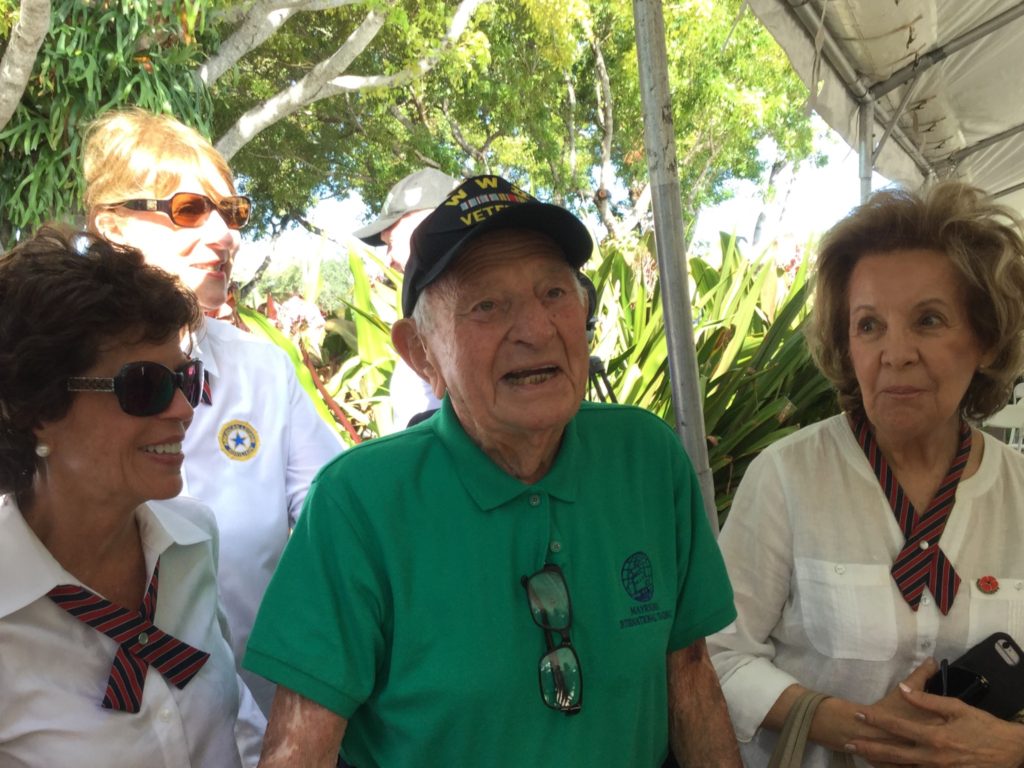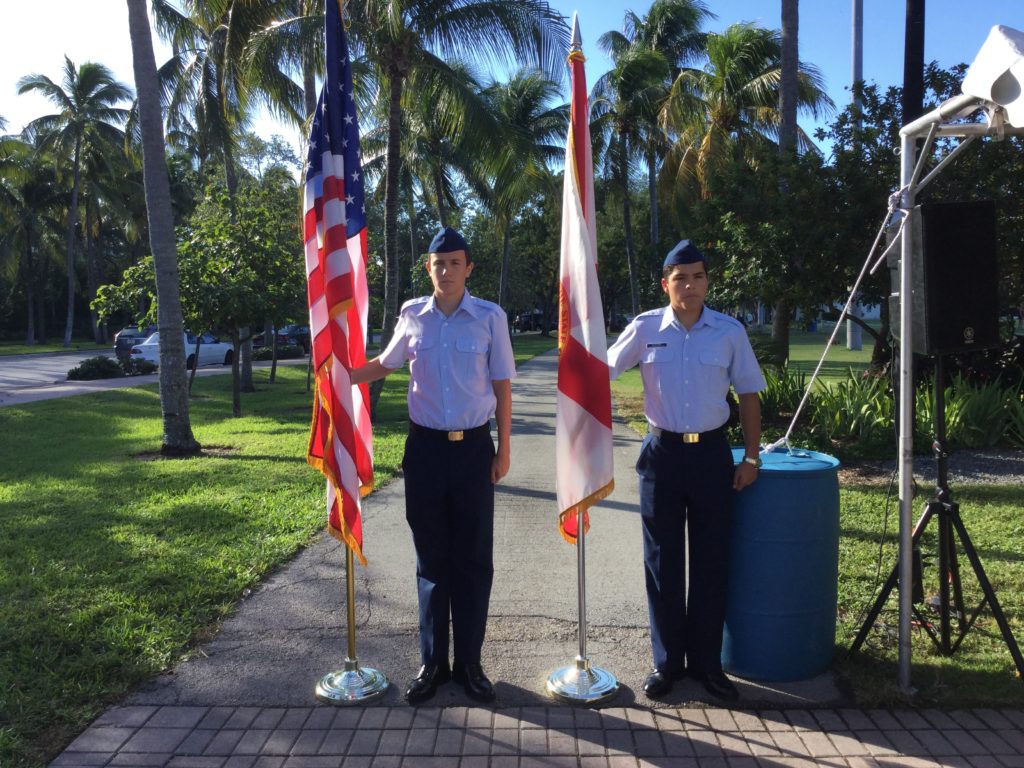World War II Prisoner of War Shares Stories at Key Biscayne Veterans Day
Key News ContributorNovember 15, 2019

WWII Veteran Barney Mayrsohn at Key Biscayne’s Veterans Day ceremony, Nov.11 (Key News/Maria Iriondo)
BY MARIA IRIONDO Key News Contributor
On a breezy Monday morning two MAST Academy cadets stoically held swaying flags as an estimated 200 Key Biscayners gathered under a white tent for this year’s Veterans Day ceremony.
Members of the American Legion and the American Legion Auxiliary were present among many other local veterans for an emotional service of stories, history and song.
Mayor of the Village of Key Biscayne Mike Davey started by thanking veterans for their service before turning to draw lessons from the history books. He said the Armistice of 1919 and the Treaty of Versailles, signed 100 years ago, stopped the fighting of World War I but may also have led to some unfortunate consequences.

MAST Academy cadets at the Key Biscayne Veterans Day ceremony, Nov. 11 (Key News/Maria Iriondo)
“The decisions that were made by, frankly, old, angry men at a table in Paris dictated what went on in the Middle East and sanctioned Germany for economic reparations that drove the democratic republic out of government, which allowed a megalomaniac like Hitler to come into power,” he said.
Davey said we all need to be thoughtful in our decisions, citing on a national level the current administration’s distancing of itself from bodies such as NATO and the U.N., which were created in the wake of war.
“To forget the sacrifice Americans made, what our allies made, I think is very cavalier and unfair,” he said. “The decisions we make now will impact us forever.”
The mayor closed his speech with words of gratitude. “Without these people we couldn’t enjoy this community.”
Attendee Naydu Commenoz, who never misses a Veterans Day celebration, agreed. “We are in a democracy because of them.”
American Legion, historian and local Larry LaRusse paid honor to two recently-deceased former marines and Navajo code talkers, John Pinto and Fleming Begaye, who used their complex language as an unbreakable code across the Pacific during World War II.
“During the invasion of Iwo Jima, six Navajo coders sent out 800 messages by telephone and radio, all transmitted without error.” LaRusse quoted their signal officer Major Howard Connor who said, “if not for the Navajos, we would’ve never taken Iwo Jima.”
Surely the star of the show was 96-year-old World War II veteran and prisoner of war Barney Mayrsohn, from Quayside, who is a recipient of two Purple Hearts, a Bronze Star and a Combat Infantry Badge.
At the age of 21 Mayrsohn tried to enlist after Pearl Harbor but was rejected. “A year later, in order to get in, I had to masquerade my broken shoulder,’ said Mayrsohn. “When they asked me to raise my both hands, I raised my right hand and scratched my back with my left.”
On Dec. 16, 1944, while stationed with the 423rd Regiment of the 106th Infantry Division in the Ardennes, Mayrsohn and his fellow soldiers were attacked by German forces in the Battle of the Bulge.
Captured and imprisoned for almost six months until he was freed by Russian forces, Mayrsohn shared some gruesome details of his days in the Stalag 4B prison camp. “I was 150 pounds when I went in. I was 100 pounds six months later. All we were given was maggots and water to eat.”
Mayrsohn’s moving story received a standing ovation that was followed by a rousing rendition of God Bless America. Father Robert “Bob” Libby of St. Christopher’s by-the-Sea Episcopal Church closed the ceremony.
“Let’s remember those who came home wounded,” Father Libby said. “And we pray that we will never forget them.”
‘From Brooklyn to the Battle of the Bulge and on to Building an International Business,’ Barney Mayrsohn’s memoir, written by historian Seth Bramson, is sold online.


